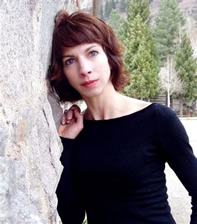
13 Aug Madonia Innovates at Colorado Ballet
Starting in the mid-1990s, dance in Telluride rhymed with the name of former prima ballerina Valerie Madonia.
When we first met in the mid-1990s, I did not speak fluent ballet. And I am still not sure if a revoltarde is something that you spread on celery. But Valerie demanded (and deserved) reviews and reviews were my job when I was writing in that decade for the Planet. When I protested the assignment as beyond my pay grade and expertise, Valerie told me to relax and write what I saw and felt. What I saw when she (and the Joffrey Ballet in particular) performed in town brought new meaning to the words “Rocky Mountain high”: exquisite lines, technical pizzazz, high drama, charisma, warmth, and charm.
Years ago (around 1997), asked what makes a dancer great, Valerie replied:
“Stars like Nureyev, Baryshnikov, Makarova, Farrell, Bujones, all have exceptional physical and technical virtues. More than that however, each of them has a unique persona, and it is this nearly ineffable, yet somehow palpable thing they manage to communicate that sets them apart. It’s what we call star quality.”
Valerie might as well have been describing herself. Those of us privileged to have seen Valerie dance over the years (since 1994) know she too emitted an aura that compelled our full attention.
Valerie left town in 2013 to accept a job as director of the Colorado Ballet Academy, where she continues to make her pointe with emerging talent.
As Emily Katz of Pointe Magazine online points out in the article below.
When choosing a pre-professional program, many dancers focus on the number of hours they’ll spend training in the studio. But technique is only one ingredient in the recipe for making a professional dancer. To produce well-rounded artists, many ballet schools are expanding their curriculums to include classes in dance history, science, stagecraft and career counseling. “The focus so much now is on technique, but I think it’s important for us to go back and develop ourselves as artists and people,” says Colorado Ballet Academy director Valerie Madonia. The broader knowledge these supplemental classes bring makes dancers more marketable as professionals, and helps distinguish a good dancer from a great artist.
Dance History and Culture
Whether you study Vaganova or Cecchetti technique, understanding ballet’s roots and how the art evolved is important to the development of educated, worldly dancers. Madonia, seeing a big hole in the way dancers are trained, decided to spend an hour out of the studio each week exposing her students to different perspectives of dance and the world. “There is so little time in the studio for dancers to really look at the history and meaning behind the work they are doing,” she says…



Sorry, the comment form is closed at this time.